Kumamoto Japan  SUMMER TRAVEL LOG vol.1
SUMMER TRAVEL LOG vol.1

Logged by Garth “Kakeru” Crouch
A travel writer and translator who explores “off the beaten path” Japan.
Kumamoto City
OVERVIEW
Kumamoto City is the capital of Kumamoto Prefecture. Though it’s the third-largest city on the island of Kyushu, Kumamoto City has a fairly laid-back vibe, and its own unique charm. With so much to offer by way of history, culture, and delicious food, if you’re coming to Kyushu Island, then a visit to Kumamoto City should be at the top of your list.
GETTING ARROUND
There are plenty of public transport options to get to Kumamoto City from neighboring prefectures, like Fukuoka, Nagasaki, and Oita, to name a few. The Shikansen (bullet train) stops at Kumamoto City, and lies somewhere around the halfway point between Fukuoka in the north and Kagoshima in the south of Kyushu island.
Once here, there are plenty of options to get around Kumamoto City, but the best is the well-preserved tram network that has been in operation since 1924. There are both old-fashioned trams and modern trams that were more recently installed. While it only costs one flat fee regardless of distance, if you plan on using the trams to visit several destinations, it might be worth buying a one-day pass, available for only ¥500.
Locals use these trams to get around, but they are also a great travel option for tourists as well as tram stops are located near major points of interest, like Kumamoto Station, Kumamoto Castle, Suizenji Gardens, etc.
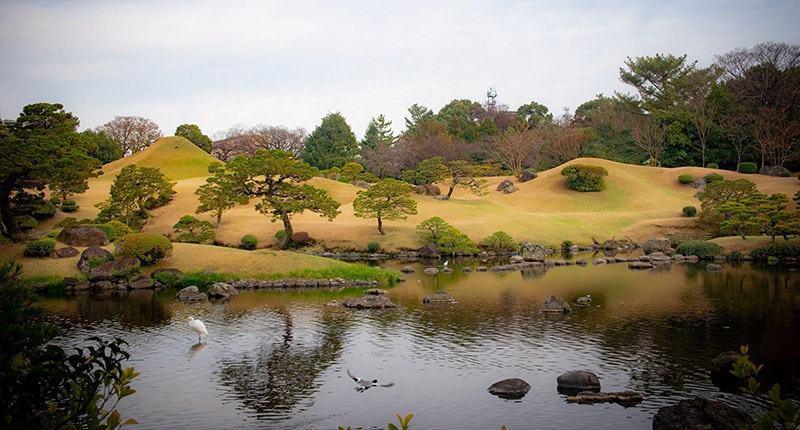
Sightseeing
A large-scale Japanese garden, Suizenji Jojuen Garden was established in the early 17th century. The large pond is fed by underground water from Mt Aso, which is said to take 20 years to filter its way through to the area. Sitting behind the pond is a miniature mountain that is said to be a replica of Mt Fuji.



The grounds are quite extensive and feature Shinto shrines, a tea house, and a Noh theatre, so be sure to leave plenty of time so you can thoroughly enjoy the beauty of Suizenji Jojuen Gardens.

Suizenji Jojuen Garden --- Kumamoto City
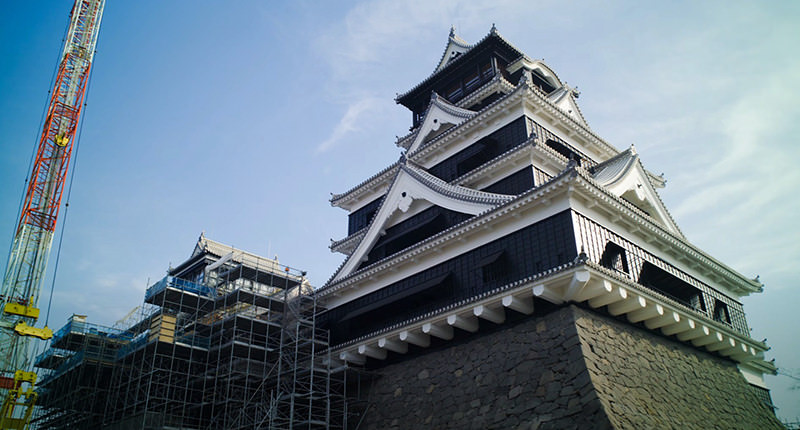
Kumamoto Castle
If you’ve been looking into visiting Kumamoto, you’re sure to have come across plenty of information about Kumamoto Castle - one of the most prominent and famous landmarks in this region, and a symbol of the city.
Kumamoto Castle is considered to be one of the finest castles in the whole country, while the castle walls, which even have a title of their own (musha-gaeshi), are also an impressive architectural feat.

The castle grounds are quite large, and just taking a stroll through the gardens on a nice day is in itself a great experience. There are also several Shinto shrines here that should also be a part of your visit. Kumamoto Castle Inari Shrine and Kumamoto Daijingu Shrine sit in the same shrine complex below the castle’s honmaru, and Kato Shrine, which sits across from the main castle tower. For those who have a goshuincho (a book to collect shrine and temple seals, or goshuin), both shrines offer this service.

For those traveling to Kumamoto in the spring, Kumamoto Castle is a great place for cherry-blossom viewing! Just remember that Kumamoto is on Kyushu Island in the south of the country and spring comes here earlier than it does further north.

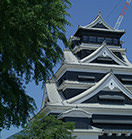
Kumamoto Castle --- Kumamoto City
Johsaien Castle Town
Sitting directly below Kumamoto Castle, is the replica castle town of Johsaien. While the buildings that make up Johsaien are not original historic buildings, don’t let that stop you from checking it out! The buildings are a perfect mix of traditional Japanese charm with modern features like glass sliding doors - the end result is a stunning Japanese castle town with all the comforts of modernity.
Johsaien was built to convey the history and traditional cultural heritage of Kumamoto, as well as showcase things like regional foods and produce.
There are restaurants that serve local cuisine, and stores selling souvenirs.
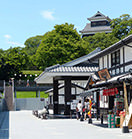
Sakuranobaba Johsaien --- Kumamoto City
Kitaoka Nature Park
Kitaoka Nature Park is actually where the ruins of Myogeji Temple stand - a temple that once belonged to the ruling family of Kumamoto.
The park is located on the side of a hill, and tree-lined staircases take you up into the hillside where the burial shrines still stand. You can really feel the history in the atmosphere of this place, and the roofed walls, traditional gates, and old wooden shrines make for an amazing photo spot!
Another great thing about Kitaoka Nature Park is that it’s located only about 15 minutes walk from Kumamoto Station.
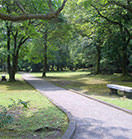
Kitaoka Nature Park --- Kumamoto City
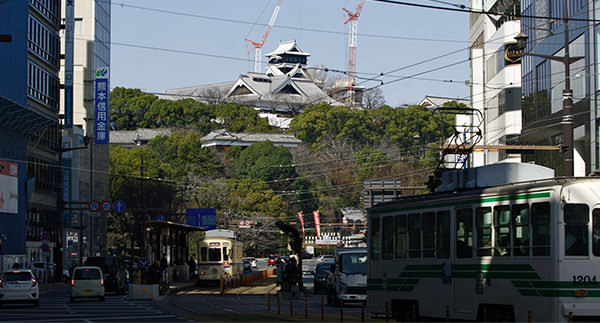
Shopping
Shopping Arcades --- Kamitori & Shimotori Shopping Arcades
There are several shotengai (shopping arcades) in Kumamoto City, but the two main ones are Kamitori Arcade and Shimotori Arcade.
Shimotori Arcade is approximately 511m in length making it the longest shopping arcade in Kumamoto. It’s full of apparel boutiques and department stores, cafés, chemists, and has quite a modern shopping mall feel to it. The side streets that run off from the main arcade are full of restaurants and bars, and you’ll often find musicians or performance groups making use of the 15m wide arcade.
The main road, tram tracks, and a large crosswalk separate Kamitori from Shimotori. You can see Kumamoto Castle from this crosswalk!
With a mix of original old-school stores amongst brand new boutiques, Kamitori Arcade has a different feel from Shimotori Arcade. The use of wood flooring coupled with the natural light that shines in through the transparent arch roof gives Kamitori a more open-air and laid-back vibe. Kamitori seems to be particularly popular among younger shoppers.
Like any major city in Japan, credit cards are often accepted, but it’s always best to have cash with you as there are a lot of places that will only accept cash.
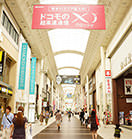
Kamitori Shopping Arcades --- Kumamoto City
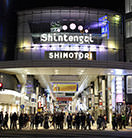
Shimotori Shopping Arcade --- Kumamoto City
Ueki Hot Springs
While not located right in the centre of town, you don’t have to travel right up into the mountains to enjoy the luxury that is onsen!
Ueki Onsen is located about 50 mins drive north of the center of Kumamoto City.
Although Ueki is still a part of Kumamoto City, the hot springs are surrounded by rice paddies and even a river on one side, which makes it the perfect little getaway when you need some time away from the city or to get some rest and relaxation from a busy travel schedule. Ueki doesn’t have that hot spring resort town feel, so it’s actually a great way to see what an everyday town on the northern outskirts of Kumamoto City is like.
You can take a day trip to the hot springs or stay overnight in one of the ryokan (Japanese-style inn).
Buses to Ueki are available from the Kumamoto Transportation Center.
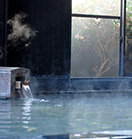
Ueki Hot Springs --- Kumamoto City
Final Thoughts
Kumamoto City has its own distinct charm and is far more laid-back than Japan’s bigger cities. The city has plenty of attractions for tourists, and thanks to its fantastic tram service, getting around the city is fairly easy. There are so many great restaurants where you can try traditional foods or cuisine that features a modern spin on traditional delicacies. Getting to Kumamoto City via public transport from other cities is relatively easy, and even the Shinkansen stops here, so you really have no reason not to come and check it out for yourself!